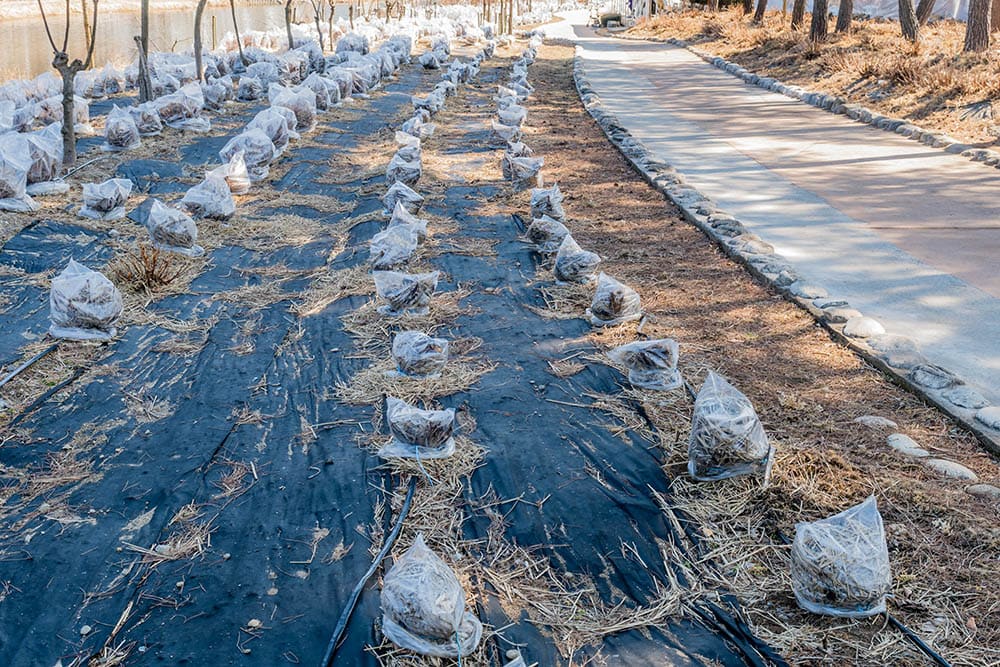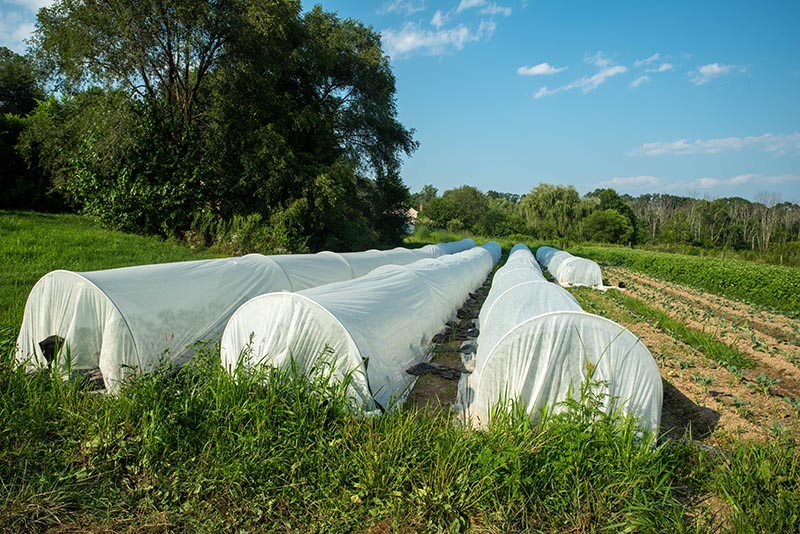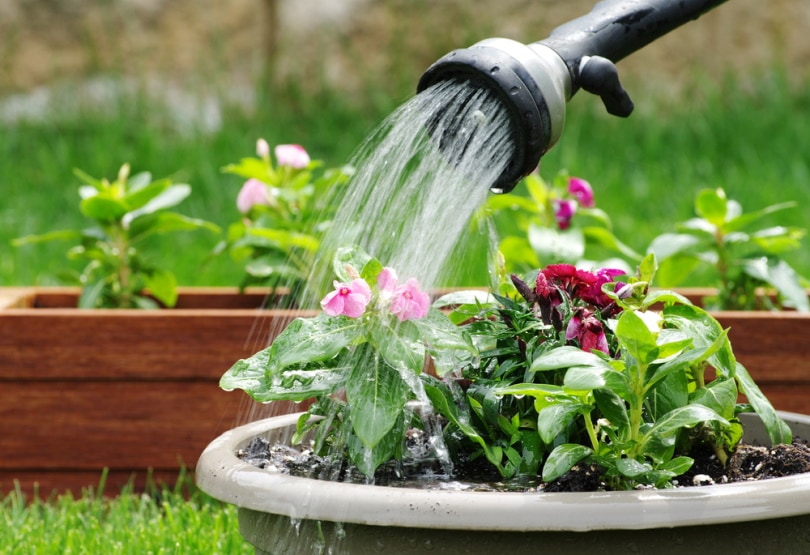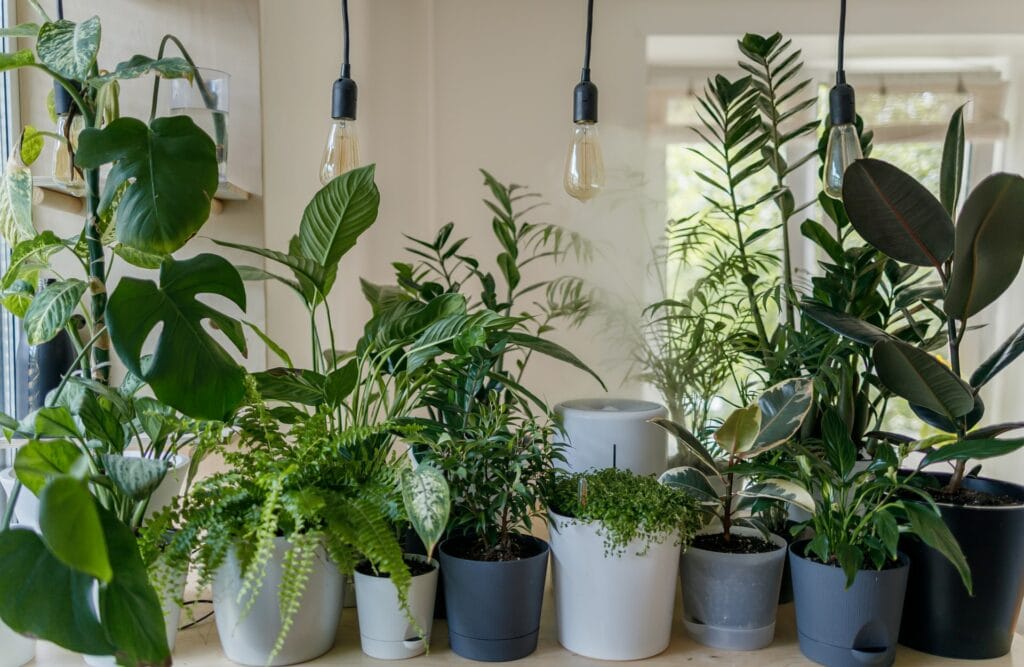How to Protect Plants From Frost: 12 Tips & Tricks
-
Greg Iacono
- Last updated:

If there’s one type of weather phenomenon that can put a scare into any gardener, it’s frost. Caused when water vapor in the air settles onto a surface and freezes, this incredibly thin layer of ice can be a death sentence for plants and flowers. In early spring, frost can significantly damage any new seedlings you’ve recently planted. Your perennials are susceptible to frost in late fall and can suffer greatly from its icy grip. Even bushes and trees can take a beating from the frost.
If you live where frost occurs, you must be prepared to deal with it and protect your plants when it’s in the forecast. Lucky for you, we have 12 tips and tricks below to help you protect your plants very well from frost. You might not be able to stop frost from occurring, but you can give your garden and plants a fighting chance when it does.
The 12 Tips & Tricks to Protect Plants From Frost
1. Be Prepared With Protective Coverings

Frost can’t hurt your plants if it doesn’t touch them, which makes it vital to cover them before frost arrives. For most home gardeners, that means a trip to your local home improvement or garden store for a few essentials.
- Large plastic sheets, wooden stakes, and garden staples
- Burlap Tarps
- Rigid Plastic Containers
- Horticultural Fleece
- Old bed sheets
Keep some (or all) of these covers dry, folded, and ready to use year-round, as well as stakes and garden staples. When you do, you’ll be fully prepared to protect your precious plants and won’t have to run around like mad trying to find them at the store.
2. Prop Up and Anchor Down Your Plastic Sheets
Plastic sheeting, which you can purchase in rolls, is an easy and effective way to cover a wide area in your garden. However, it’s best on small, low-to-the-ground plants. That’s because you need to prop it up so it doesn’t sit directly on your plants. You can use stakes, dowels, or any type of stick for the propping. Also, anchor down the ends and sides of the plastic sheeting so it doesn’t blow off at night. Garden staples are perfect for this task.
3. Old Bed Sheets Will Do in a Pinch

You can use old bed sheets when all the stores are closed, and you don’t have anything to cover your precious plants and flowers. Old sheets might even be better than plastic because you can lay them directly over your plants without worrying if they touch them or not. You should still anchor them down so they don’t blow off at night.
4. Burlap Tarps Protect Trees and Shrubs From Frost
It’s not just small plants that suffer from frost; trees and shrubs can take a beating from icy conditions. One excellent method is to cover them with burlap tarps, which are all-natural and will hold in the heat. For trees, wrapping the trunk with burlap works like a charm. You can lay burlap over the tops of your best bushes, including rose bushes, to keep frost from damaging them. Unless it’s windy, there’s no need to anchor burlap down since it’s relatively heavy already.
5. Rigid Plastic Containers Can Protect Individual Plants (And you can Recycle Them!)

Some smaller, younger, and more fragile plants won’t like being covered with plastic, sheets, or tarps, which can damage them almost as much as frost. For those plants, individual plastic containers work well. One-gallon milk, juice, and water containers are perfect for covering plants. Simply cut off the bottom and turn them over on each plant, ensuring they don’t put pressure on their delicate leaves, branches, or stems.
6. Horticultural Fleece Works Well (But it’s Expensive)
As a relatively new product, horticultural fleece is a material you can use to protect plants and plant beds from frost’s icy grasp. You can purchase horticultural fleece in sheets, but there are also individual covers made from the material you can use to cover single plants. The one drawback is that horticultural fleece is rather expensive compared to plastic, burlap, and old bed sheets. The cost could be prohibitive if you have a large garden or many plants to cover. However, once purchased, you can use horticultural sheets over and over, which will lower the cost significantly in upcoming seasons.
7. A Ripening Cover Will Ensure the Last of Your Fruit and Veggies Make It to Your Table

Some plants, especially fruits and vegetables, die at the end of the season, whether there’s a frost or not. For this reason, protecting them for the next season isn’t necessary. However, if they still have fruit and veggies that haven’t ripened completely, you can use a ripening cover to speed up the process before frost hits. Not only will the ripening cover help vegetables and fruits ripen faster, but it will also protect them if frost does occur.
8. Cover Your Plants Before Sundown
If frost has been forecast and you’re prepping to cover your plants, do it late in the day before the sun sets. Whatever cover you use will trap some of the day’s heat underneath. Also, before you cover them, give your plants a light watering.
9. Water Your Soil Before Frost Occurs

For some, watering before it freezes may seem counterintuitive. However, water holds heat better than dry soil and keeps the air warmer near your plants. One caveat is that you shouldn’t soak your soil completely. If you do and it freezes, it could severely damage the roots of all your plants. Evenly moist soil is the best and will hold twice as much heat as its dry counterpart.
10. Create a Heat Sink for Your Plants
A heat sink is a device or structure that traps heat during the day and then slowly releases it at night, which can help your plants survive a frost. A heat sink can be almost anything, from a brick or stone wall to a large planter with evenly watered soil. Stone pavers around your garden are excellent heat sinks, as are large trees. Also, anything black will trap about 35% more energy than other colors, especially white. One excellent heat sink is a gallon bottle painted black and filled with water. These containers are easy to make, inexpensive (if you recycle your gallon milk and juice jugs), and can last for many seasons.
11. Move Any Plants in Containers Indoors

One of the best methods of protecting your plants from frost is moving them inside. Of course, you can’t move your garden indoors, but you can certainly move any potted plants inside the house.
12. Don’t Forget to Mulch
Mulch enriches the soil for your plants but can also be an excellent insulator. Laying down a layer of mulch will protect the base and roots of your plants but can be tricky if you need to cover a large area. It’s better to use mulch on plants spread widely apart and other methods for large swaths of closely planted plants. Also, in spring, remember to remove the mulch after the risk of frost has diminished.
Conclusion
Frost can be incredibly damaging to a home garden and may even kill some plants and ruin your gardening plans. We hope the 12 tips and tricks we’ve provided today give you the knowledge you need to ensure frost’s freezing ways don’t harm your precious plants. If you prepare with the right tools and covers, your plants will have a much easier time surviving when frost rears its frigid head.
- See also: Which Fruits Are Best For Juicing?
- https://happydiyhome.com/how-to-protect-plants-from-frost/
- https://drency.com/what-is-burlap-made-of/
- https://www.greenhousesensation.co.uk/protect-plants-from-frost/
- https://www.almanac.com/protecting-your-garden-frost
- https://modernfarmer.com/2020/11/heat-sinks/
- https://beesandroses.com/how-to-protect-plants-from-frost/
- https://gardeningtips.in/top-10-tips-to-protect-plants-from-frost-ideas-and-techniques-for-beginners
Featured Image Credit: Ankhesenamun, Unsplash
Contents

